It is interesting how the universe works sometimes. Last week I traveled to Ft. Myers to visit Mother Andrea and Mother Theodora at the Saint Nicholas Monastery. Among their myriad of activities is improving their eleven acres to be what we generally would call food-producing permaculture. (Permaculture is a speciality that is not my area of expertise but I know I have a lot of readers who are permaculturists. If any of you want to lend them a hand or perhaps have an 11-acre permaculture pallet to work with please contact them.)
I spent the better part of a day at the monastery looking at the property and identifying wild edibles and other plants. We saw several dozen edibles species. Like many places in Florida they are invaded by D. bulbifera but also have Dioscorea alata, a nice find. At one point they wanted to know if I knew the identity of a particular tree. It was rather large with green, red and some yellow leaves. The tree was, as I say, not inside my head. I had no idea what it was. I was told a local expert had also looked at it and couldn’t identify the tree.
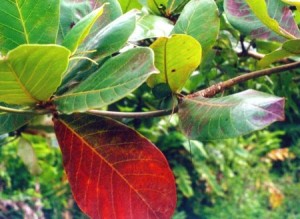
Tropical Almond leaves turn yellow and red before they fall bringing a color of fall to warm areas all year.
Early Saturday morning I bid the Mothers goodbye and taught two classes on the west coast of Florida then crossed the state for a class in West Palm Beach on Sunday. During Sunday’s class two people knew a tree I did not know. It’s rare that I get a chance to be a student that I thoroughly enjoy it when I can. I learned from them, as did the other people in class did, that the tree was a Tropical Almond. Since it is an edible I decided to research the tree so I could add an article about it to my website. I also noticed that it had the same growth pattern as the unidentified tree at the monastery. I think we have a match and wrote the Mothers to say so. It was a mystery on Friday and solved on Sunday. How appropriate. It is interesting how the universe works sometimes.
Does Pellitory make you itch? When I first came to Florida decades ago and studied foraging locally I was told half the people who eat Pellitory will get the “itches” (similar to a niacin flush, harmless and soon passes.) When I teach classes I mentioned that it might make some people itch. Why some? Because in more than 20 years of knowing people who eat this plant I’ve never met anyone who gets the itches after eating it. What I do know is that one of its European relatives which is also naturalized in Australia is a severe allergen like Ragweed. Maybe that is the genesis of the warning. If you know of anyone who gets itchy after eating Pellitory I’d like to know about it. Incidentally, the same thing is said about eating Water Hyacinth.
Two classes this weekend were assisted by man. In Port Charlotte ground keepers hadn’t mowed in a while so all kinds of edible weeds were happily growing in the water-side city park. Without having to move much we saw many seasonal stars: Spanish Needles, Epazote, native Plantains, Sow Thistles and Amaranth. The Ground Cherries were blossoming and we even managed to find one with an edible fruit, not out of season per se because they can fruit all year but they do favor late summer and fall. My favorite though was the very seasonal Sea Blite. In the Chenopodium family it shows up along the inner coastal water ways on both sides of the state. Mild, crunchy, slightly salty, tasty, wonderful. It’s my recommendation for a new commercial crop and can be grown on unusable salty soil. You can also grow it at home in regular soil if you want.
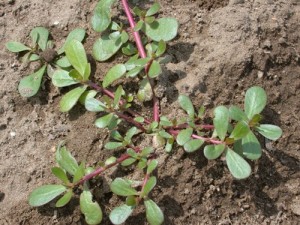
Wild and nutritious Purslane loves to grow. Photograph by World Crops
West Palm Beach brought the Tropical Almond surprise mentioned above and a great object lesson. In West Palm Beach we meet at Dreher Park which is also the location of the local zoo. One corner of the entrance of the park used to be a large clump of Bougainvillea (which can be a skin irritant for some people. I’ve also had an editor tell me it is the most often misspelled flower name.) Sometime between my last visit last month to the park (March 10th) and Sunday (April 14th) they took out the Bougainvillea leaving the corner vacant. It was totally covered with young amaranth and very happy purslane. They were growing in grand profusion. Weed seeds can lie dormant in the soil for many years, often decades sometimes centuries and when conditions are just right they sprout. That’s probably what happened in the corner. I don’t recall seeing any grass seedlings at all. All it took to get an instant vegetable garden was getting rid of the bushes, turning the soil, and a bit of rain. They were also happily growing without being watered or fed fertilizer. Given even half a chance nature will provide.
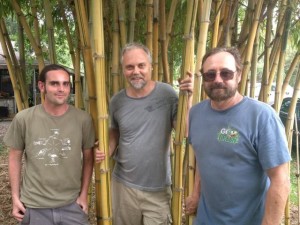
Timothy Lane, Andy Firk & Green Deane, or as Andy said: No beard, half beard, full beard. Photo by Jenna Norwood.
I also had the pleasant opportunity last weekend to visit one of Andy Firk’s plant shindigs at his Bamboo Cove in Arcadia. If you haven’t gone to one plan to go. You can find him and related events on Facebook. His get togethers are relaxed, informal, and very informative. Andy always has a stable of speakers and specialists on hand. You can’t leave without learning something important and interesting. Thanks for inviting me Andy. I’ll pick up the hat I left next time I’m there.
Botany Builder 26: Ligule is a variation of a Dead Latin word meaning “little tongue.” Ligules are an important element of identification particularly in grasses. Usually where a blade of grass separates from the main grass stem there is a ligule (LIG-yool.) That white membrane in the center of the picture to the right is a ligule. Characteristics of the ligule help with the grass’ identification, or in the case of Barnyard Grass, its absence also helps the identification. Ligules are also used in reference to the 20,000 species in the Composite family. In that case it usually refers to the flattened part of a ray of the blossom.
Probably most of us know someone who is so estranged from nature that they are afraid to get off the sidewalk. That which served as man’s grocery story, pharmacy and hardware store frightens them into paranoia. Now there’s research that shows nature just might be the answer to their nature phobia.
Despite what college students might think researchers have known for a long time that distractions such as noise reduce concentration, productivity and makes us more on edge. It has also been generally known that “getting back to nature” reduces stress, improves concentration and the like. The problem was gathering good evidence for said. A Scottish study did that recently with its findings published in the March issue of the British Journal of Sports Medicine. Conducted at Heriot-Watt University in Edinburgh students were fitted with unobtrusive electrodes that transmitted their brain waves wirelessly to laptops carried in a back pack. The students then took a 1.5 mile walk at their own pace. They went through a historic district with charming old buildings, pedestrians on sidewalks, a light vehicle traffic. Then they walked through a park setting for a half mile and finished by walking through a busy, commercial district with heavy vehicle traffic and concrete buildings. All that time the information about their brainwave patterns were being transmitted to the laptops.
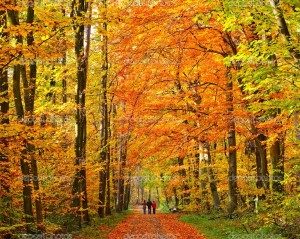
Photo by Sergey Borisov
The data show green spaces are less tiring on the brain. The students’ brains were mentally quieter while in the park. This does not mean they were less attentive or aware. In fact Dr. Jenny Roe, a lecturer at the school and who supervised the study, said the natural environment still engages the brain but the attention demand is “effortless” (which says to me that’s where we’re meant to be.) The term for effortless awareness is Involuntary Attention . “It holds our attention while at the same time allowing scope for reflection,” Roe said. It provides true relief to the nonstop attention demand one would find in a city street. For someone living in the city taking a break by strolling through a park is not “unproductive lollygagging” said Roe. “It is likely to have a restorative effect and help with attention fatigue and stress recovery.”
Any forager could have told her that.

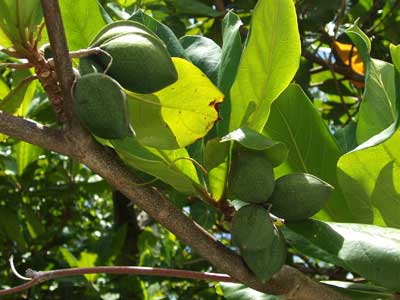
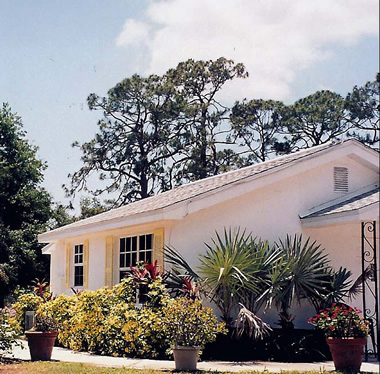
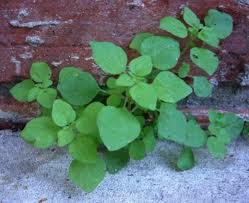
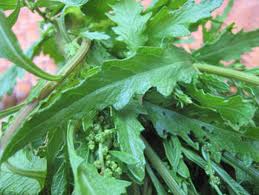
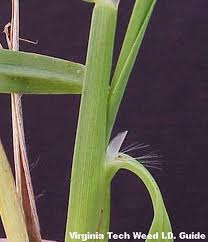


Keep up the good work! You’re the best!
Dear Dean,
Most of the old estates up in New England are very good examples of Permaculture. It really is a facinating thing that people are only now rediscovering a useful garden that is appealing visually as well. I am certain this is the goal of the sisters. Gerards Herbal would be a good reference book as well as Edible landscape plants of florida isbn # 9781475033007. If memory serves, roses grow well there and several varieties have multiple uses, the old varietals are more susceptible to beetles but have myriad more uses. Oil of roses (perfume and antiseptic) rosepetals in a salad (yum) candied rosepetals for visual decoration and well as candy, dried and tucked into sheets in sachets to repel bugs, dried petals in books for the same (only white) of course dried hips for nutrition as well as a tasty twang to tea and of course rose hip jelly. I even made rosary beads out of the petals once and gave the rosary to my grandmother (a marion devotion devotee for over 50 years). In short my grandmother who was also a horticulturalist had a permaculture estate of about 20 acres for about 50 years. If you would like to pass on my e-mail address to the sisters, I can tell them what I know, unfortunately, many of the species would be unlikely to grow down here. I can tell them about the fish pond irrigation as fertilizer and food scheme that she got from a 17th century monastery as well as the Japanese garden I did down here.
Great to finally meet you, Deane! Thank you for the wealth of knowledge you so generously share.
Do you give lectures as well as classes?
yes I do, quite often.
I hope to get a chance to take one of your tours soon. I’m looking forward to meet you Greene Dean. Thank you for all the information on wild edibles. I read your site daily !
Tropical almonds are very common (landscaped) along the beaches in Broward. It also a common medicinal in the Bahamas
purslane—Who’d have guessed? I’m off to pick some…all over my yard.
great newsletter Deane! I never quite figured out how to get those nuts out in an efficient way. They were one of the MOST COMMON wild foods that I saw in the Caribbean/South/Central American coasts. Very prolific producers….much more so than sea grapes, which if it wasn’t for small harvests (I was only in Panama long enough to observe through a cycle and a half of seasons).
love the research article. Nice reading on my break from a pumping sugarbush. 19 trees tapped. sugar sugar sugar!!!!!
aloha, ~sunny
oh yeah, i forgot to mention that I have fed hundreds of people using the tropical almonds leaves! For most food I found them more desirable than the sea grapes’. -is that correct grammar?-
It is a generous, giving tree and I hope to further my relationship with it back on Maui. aloha, ~sunny
Class in Port Charlotte on Saturday was wonderful. Thank you so much for everything you shared. We got home and couldn’t believe that we have 6 of the plants we had just learned growing right in our own small yard. Thank you again!
“sometimes the universe works that way”…..in that it was created and sustained by Logos, and has a teleonomy as a result, one could perhaps say that the Universe works that way because it exhibits information imbued within it from the ‘outside’.
I do’nt know of any one who was allergic to eating Pillitory. Being allergic to plants reminds me of a big paper -cartoon – factory near a small town called ” Aroma ” on Gash river delta in eastern Sudan where ” khirwi” – native for Ricinus communis, the raw material of the factory, grows prosperously. Many people including factory workers, farmers and local inhabitants around the factory have been affected adversely due to allergy attributed to to the plant. It was a very sad story (early sixties of last centuary) because the factory, which was originally thought to help develop the poor region has been dismantled. Although I visiited the place at that time , luckilly I’m unsusceptible to allergy of Ricinus Communis; however I became allergic twice on eating cooked shrimps once in Eygpt and a second time in Malaysia during tourism as part of getting back to nature.
Definitly, getting back to nature reduces stress and improves concentration both being really prerequisites to healthy life for all and specifically for oldl people like my self. An advocate of nature, a popular American-Lebanese poet, Elia Abu Madi has said it in: Be a meandering stream singing on enriching the fields on both banks, with it’s breeze caressing the fragrant blossoms on the branches of trees, with the star at night merrily comforting forests, streams, hills and plains. Be beautiful and enjoy beautiful nature.